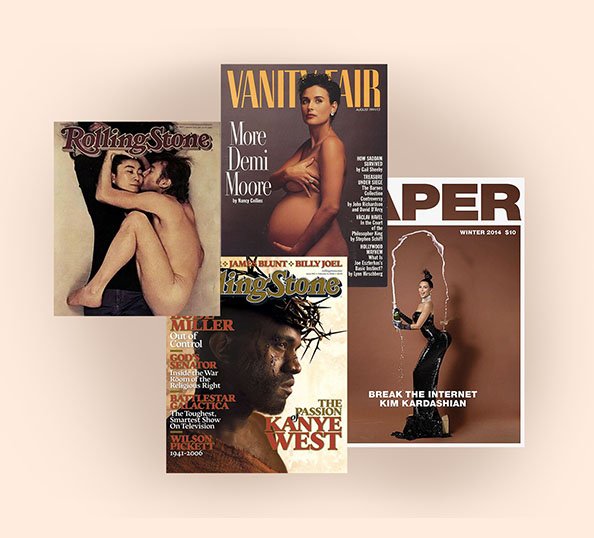In the past eight weeks of sheltering in place and shutdowns across the country, every brand and blog has felt the pressure to come up with a strong public response to COVID-19. You might remember those first uncertain weeks when your inbox was flooding with newsletters and brand responses to coronavirus, from Sweetgreen on employee safety to Apple on store closures.
In many ways the coronavirus pandemic has created opportunities for brands and companies to speak to their consumers in new ways. Digital marketing efforts have taken on a new importance, and because of working from home and other distancing measures, they’ve taken on some creative approaches, too. Everyone is experiencing the pandemic together, and as a result, there’s been a trend toward transparency and empathy. The value of authenticity predates the pandemic, but the pandemic has made it more essential than ever—the only marketing strategies that seem to matter are the ones that can be self-aware and emulate a human touch.
Here’s what a few COVID-19 strategies and assets can tell us about the future of marketing.
Steak-umm: Authenticity above all
Frozen meat company Steak-umm has recently gotten attention for dropping “truth bombs” on social media during the pandemic.
This isn’t Steak-umm’s first time going viral on Twitter. Its relatable, down-to-earth messaging goes back five years, when Nathan Allebach, the son of the CEO of Allebach Communications, took over the Steak-umm account. What it shows us, though, is the importance of an authentic, engaged voice in uncertain times, one that’s less concerned with selling the product than using the platform they have to curb the spread of misinformation.
Allebach told the Washington Post that he developed the Twitter persona for the brand by first looking at the brand itself: “The voice is based on a combination of brand features, like it being a family-owned frozen meat company built by the working class,” he said in an email, “then me trying to personify it based on those features, my own thoughts, and an adaptable human-esque style that feels like someone you know.”
The best aspect of Steak-umm’s social voice, and perhaps where the real marketing lesson lies, is in its self-awareness:
Steak-umm’s social metrics have gone down since early April, when fear about the pandemic was at its height on social media. But the gravitation to Steak-umm’s thread in the last month shows that self-awareness and keeping it real are key factors for building consumer trust.
Lesson: Bring a genuine voice to your brand
Whether you’re a public-facing brand or a B2B, Twitter is a perfect platform to experiment with brand voice (check out R/GA’s amazing work from home content as proof). Stop thinking about Twitter solely as a platform to boost engagement, as start thinking about it as a medium for conversation and genuine interactions. The best thing to do with a brand Twitter account is to break script and be human.
Burger King: Just relax
Like other restaurant chains, Burger King approached the pandemic from a charitable perspective. Charity and service are not new to the company, and it’s nothing new that consumers want their companies to have some corporate morality. Sustainability and sound labor practices count more than ever. What’s different here is the scope.
In a recent interview, BK CMO Fernando Machado explained that the company is acting without considering how its actions—in this case, donating meals to hospitals and to kids—specifically help its bottom line. “Brands should be trying to help communities by doing real concrete things that are going to help,” Machado explained. “They should be helping and doing so in ways that aren’t opportunistic or exploitative. For us, we’ve stopped being so strict about whether or not something makes sense for our brand positioning.”
Machado’s consideration about relaxing brand positioning also led to the creation of one of their new COVID-19-appropriate TV assets. BK’s early April commercial, “Stay Home of the Whopper,” encourages consumers to stay home, order in, and become a “couch potatriot.”
As luck would have it, this ad was shot well in advance of this pandemic—it was being held in reserve for President’s Day or Independence Day. And, as far as the footage goes, it pretty much looks on brand for Burger King. But the voiceover is unique. When it comes down to it, the commercial is essentially a PSA—a public health advisory in a Burger King wrap, further evidence that Burger King is working outside the usual guardrails.
Lesson: Forget block lists, just speak to the moment
One of the benefits of putting out such publicly empathetic messages is that they work in almost any context. Rather than putting a block list on content that focuses on recent news, just adapt. That’s what Machado did for Burger King: “I would personally rather have us focus on making sure that whatever we put forward takes into consideration the context,” he said. “And that’s exactly what we did.”
Old Spice: Reduce, reuse, recycle
Recycling content has been one of the unexpected—yet hilarious—consequences of limited production capacity. Companies have been finding all sorts of surprising workarounds for asset production—from low-budget stop-motion animation to vector images. These wild remakes of Terry Crews’ old advertisements for Old Spice—now redubbed with corona-friendly messaging—take the cake.
These dubs, which seem to exist in the uncanny valley, were produced by a socially-distant crew. And they’re so bad that they’re almost good. Their awkward, low-budget quality puts them almost within the realm of the meme. But the effect is deeper than just a joke: these ads expose the production, draw back the curtain, and show consumers, as transparently as possible, the making of the assets themselves. Old Spice demonstrates a willingness to be vulnerable—to make fun of itself, and its product, at a time like this.
Lesson: Don’t fear the uncanny valley
In its report on Generation Alpha, communications firm Hotwire revealed research that showed that in the future, extra-tech-savvy younger consumers are going to be particularly sensitive to what technology can’t do. Alexa can provide you with an answer, but she can’t have a full-blown conversation.
As processes become more automated, human interactions and high-quality customer service are going to become even more essential to maintaining a consumer’s trust. Revealing technological imperfections—and implicating the very human, likeable figures behind those automated interactions—might very well make technological limitations an endearing asset. All that’s needed is a charming spokesperson and a producer with an absurdist sense of humor to make it work.
What this means for the future of marketing
Ultimately, all these marketing efforts combine a certain scrappiness of presentation and empathy, highlighting the intelligence of the real people who make them. And that’s really what customers are attracted to—smart brands with self-aware, authentic marketing strategies, unafraid to be bold and to speak truth to power. Whether this COVID-19 moment has a lasting impact on marketing and sales strategies is unclear, but let’s hope that you can still play video games against Denny’s long into the future.



